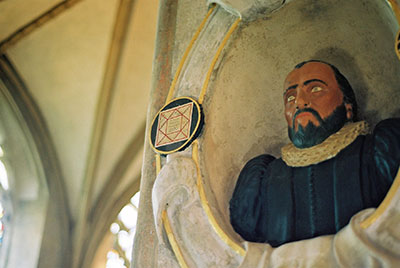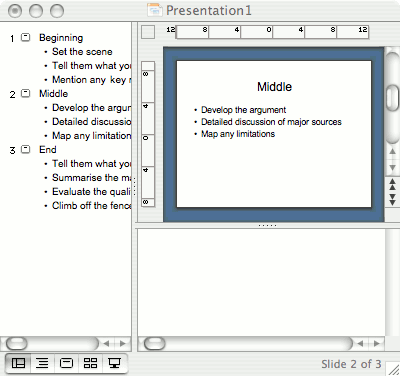Christ Church, Oxford
November 5th, 2005
This tomb shows a very scary painted figure and an old style horroscope. The place must have looked totally different when the walls were polychrome murals and lit entirely by candles….

This tomb shows a very scary painted figure and an old style horroscope. The place must have looked totally different when the walls were polychrome murals and lit entirely by candles….
Steve McCurry is a celebrated photographer who specialises in stunning colour work in india, Afghanistan and Pakistan. On page 153 of his book South Southeast is a nice evening shot of a junction in old Bombay (aka Mumbai). The photo includes a tiny lunar disc just before full. Steve McCurry uses 35mm format film (or did, he may have gone digital by now…)
The Moon’s disc is 0.5 degrees across. The disc has a diameter of about 3.5 mm on the page, so 7mm on the page corresponds to one degree of angle.
The image is roughly 360 by 240 mm (10x reproduction). Pythagoras suggests
Dividing this diagonal measurement by 7mm gives 62 degrees (roughly) as the angle of view of the photo. This corresponds closely to the angle of view of a 35mm lens on 35mm film.
To calculate the angle of view (at ‘infinity’ – that means anything over three to five feet for most moderate focal length lenses) you just…
This formula is based on taking half the diagonal to be the opposite side of a right angled triangle, and the focal length of the lens to be the adjacent side of the right angled triangle. The image is formed at a distance corresponding to the focal length only if the lens is focussed at ‘infinity’.
Now, on Steve McCurry’s picture, the image of the Moon is about 90mm above the horizon as judged by the building line at the end of the street that recesses into the distance. As Bombay is a coastal city and is mostly built on reclaimed land, we can estimate the altitude of the Moon as roughly 90 / 7 = 13 degrees. The phase of the Moon is just past full and getting on for third quarter. The parallactic angle of the disc is very roughly 225 degrees from the Zenith. The last rays of the Sun are shining from behind the photographer (camera pointing roughly East). The image was taken in 1994. There can’t be many combinations of date and time that fit those constraints… watch this space.


When I was at university, I used to ‘borrow’ old punched cards to plan essays on. I’d write each major fact on a card and then shuffle the cards until they made sense. It turns out that Wittgenstein did something similar with shoeboxes full of typed notes on card (Lila’s central character by Persig springs to mind). A friend used to write things out on sheets of paper and then cut them out and paste them together in long rolls (shades of ‘On the Road’ typewritten on a roll of fax paper).
These days, I encourage students to use PowerPoint to scaffold ideas. Using the title and bullet points slide format, they can break information down into slides, each of which has a few major points as reminders. Using the speaker’’s notes facility, they can map out the argument and add sections. If re-ordering is needed, just drag and drop the slides. The bullets and the text fragments re-order as well. Students with a visual orientation can use the slide sorter view and simple drag the slides around the screen until the sequence seems right. Students who are more verbal can use the outline view – and may indeed find the outline view in Word all they need.
Finally, use the File | Send To menu item to dump the whole plan out as a Word file. By choosing the ‘outline only’ option, students can have headings and subheadings set up ready. Else by exporting as “slides with speaker’s notes”” they can print the whole plan.



The Pitt-Rivers museum itself is a wonderful building. Pitt-Rivers collected series and sequences of objects from a wide range of cultures to show progression and changes in the design of artifacts. These series run from a case of lamellophones (thumb pianos) to a sequence showing the evolution of the Colt .45 revolver.

The printed version of Eric Weisstein’s Mathematics reference book is around 3,200 pages long, A4 format, and the book weights quite a few kilograms. Articles are arranged alphabetically and there is no index, but there are lists of all the theorems andeach article cross references to other relevant articles.
The online version is fully searchable, includes hyperlinks to other articles, and includes doanloadable Mathematica notebooks. If you get the reader from Wolfram Research, you can use interactive notebooks for some 85 of the key articles.
I shall probably end up getting the book just on the principle that I don’t need to boot the laptop and connect to the Internet to find something, and because the level the handbook is pitched at means I can ‘retire’ about 10 textbooks to Oxfam, thus saving on volume and weight.